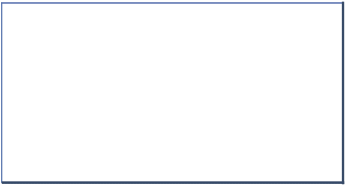250.300(a), (b)(6), (c), (d); NTL - Training Video
30 CFR 250, subpart C, Pollution Prevention and Control
BSEE-MarineTrash NTL [G03]
250.300(a), (b)(6), (c), (d); NTL - Training Video
OMB: 1014-0023
OMB Control Number: 1014-0023
OMB Approved Expiration Date: XX/XX/XXXX
UNITED STATES DEPARTMENT OF THE INTERIOR
BUREAU OF SAFETY AND ENVIRONMENTAL ENFORCEMENT (BSEE) GULF OF MEXICO OUTER CONTINENTAL SHELF (OCS) REGION
BSEE NTL No. 2015-G03 Effective Date: December 15, 2015
NOTICE TO LESSEES AND OPERATORS (NTL) OF FEDERAL OIL, GAS, AND SULPHUR LEASES AND PIPELINE RIGHT-OF-WAY HOLDERS IN THE OCS,
GULF OF MEXICO OCS REGION
Marine Trash and Debris Awareness and Elimination
This NTL is being issued pursuant to 30 CFR 250.103, and 250.300, to provide information on the Offshore Operators Committee (OOC) marine trash and debris awareness training video and slide show. This NTL also provides the mailing and email addresses for submitting annual training reports. This NTL supersedes and replaces NTL No. 2012-G01, effective January 1, 2012, on this subject and applies to all existing and future oil and gas operations in the Gulf of Mexico OCS unless and until expressly superseded.
Background
Marine trash and debris pose a threat to fish, marine mammals, sea turtles, and other marine animals; cause costly delays and repairs for commercial and recreational boating interests; detract from the aesthetic quality of recreational shore fronts; and increase the cost of beach and park maintenance. As oil and gas industry activities expand into deeper waters, the number of species of protected marine animals exposed to marine debris is increasing and now includes the sperm whale, an endangered species, as well as other marine mammals and five species of sea turtles. The discharge of garbage and debris has been the subject of strict laws, such as MARPOL-Annex V and the Marine Debris Act, 33 U.S.C. 1951 et seq., and regulations imposed by various agencies including the United States Coast Guard and the Environmental Protection Agency
Since oil and gas operations in the Gulf of Mexico may contribute to this problem, 30 CFR 250.300(a) and (b)(6) prohibit you from discharging containers and other materials into the marine environment, and 30 CFR 250.300(c) and (d) require you to make durable identification markings on skid-mounted equipment, portable containers, spools or reels, and drums, and to record and report such items when lost overboard to the District Manager through facility daily operations reports. Therefore, in accordance with 30 CFR 250.300(a) and (b)(6), you should exercise special caution when you handle and transport small items and packaging materials, particularly those made of non-biodegradable, environmentally persistent materials such as plastic or glass that can be lost in the marine environment and washed ashore. Increasing your workers’ awareness of the problem and emphasizing their responsibilities will help reduce the litter problem further and control the unintended loss of items such as empty buckets, hard hats, shrink wrap, strip lumber and pipe thread protectors.
Marine Trash and Debris Placards
You should continue to post placards that include each of the information text boxes in Appendix 1 of this NTL in prominent places on all fixed and floating production facilities that have sleeping or food preparation capabilities and on mobile drilling units engaged in oil and gas operations in the Gulf of Mexico OCS. Each of the placards depicted, with the language specified, should be displayed on an approximately 5x8 inch format or larger. These signs should be displayed at line-of-sight height at or near boat landings and heliports, in mess areas, and in the recreation or training or orientation area. One or more areas may be omitted if there is insufficient space. These notices should be referenced, and their contents explained, during any initial orientation given on the facility for visitors or occupants. Placards should be sturdy enough to withstand the local environment and should be replaced when damage or wear compromises readability.
Marine Trash and Debris Awareness Training
All of your offshore employees and those contractors actively engaged in your offshore operations (e.g., wireline operators, contract lease operators, and maintenance or construction crews) should complete marine trash and debris awareness training annually.
The training for employees and contractors consists of two parts: (1) viewing a marine trash and debris training video or slide show; and (2) receiving an explanation from management personnel of the lessee or designated lease operator that emphasizes their commitment to the message of this NTL.
You may obtain the marine trash and debris training video, training slide packs, and other marine debris related educational material produced by the OOC, through the OOC website at http://www.theooc.us/marinedebris.html . The video and slides are offered in English and Spanish versions and the video is available as a DVD or VHS tape. The video, slides, and related material may also be downloaded directly from the website.
Marine Trash and Debris Awareness Training and Certification Process
You should continue to develop and use a marine trash and debris awareness training and certification process that reasonably assures that the employees and contractors specified above are in fact trained. Your training process should include the following elements:
1) viewing of either the video or the slide show by the personnel specified above using one of the following methods:
a) attendance at periodic meetings held for this purpose;
b) as part of several scheduled training components;
c) web-based training with email notification; or
d) training by a third-party contractor;
2) an explanation from the management that conveys the commitment of the company to achieve the objectives of the trash and debris containment requirement;
3) attendance measures (initial and annual); and
4) recordkeeping and availability of records for inspection by BSEE.
By January 31st of each year, you should provide BSEE with an annual report (1-2 pages) signed by a company official that describes your marine trash and debris awareness training process and certifies that the training process has been followed for the previous calendar year. A sample annual report/certification letter is available at the OOC website above. You should send the report by email to [email protected].
In lieu of emailing the report, you may send a printed copy to:
Bureau of Safety and Environmental Enforcement
Gulf of Mexico OCS Region
Office of Environmental Compliance (MS GE466)
1201 Elmwood Park Blvd.
New Orleans, Louisiana 70123
Guidance Document Statement
BSEE issues NTLs in accordance with 30 CFR 250.103 to clarify or provide more detail about certain BSEE regulatory requirements and to outline the information you must provide in your various submittals. Under that authority, this NTL sets forth a policy on, and an interpretation of, a regulatory requirement that provides a clear and consistent approach to complying with the requirements.
Paperwork Reduction Act of 1995 (PRA) Statement
The PRA (44 U.S.C. 3501 et seq.) requires us to inform you that we collect the information described in this NTL to ensure that you conduct operations in a manner that will not jeopardize threatened or endangered species or destroy or adversely modify critical habitat that has been designated for those species. We protect all proprietary information submitted according to the Freedom of Information Act and 30 CFR 250.197. An agency may not conduct or sponsor a collection of information unless it displays a currently valid Office of Management and Budget (OMB) Control Number. We estimate the hour burden to be 4 hours relating to training video and recordkeeeping. We estimate the hour burden to be 1.5 hours for each annual report and certification. The placard postings are exempt from the PRA requirements. Direct comments regarding the burden or any other aspect of this information collection to the BSEE Information Collection Clearance Officer; 45600 Woodland Rd., Sterling, VA 2166
In addition, this NTL refers to information collection requirements under 30 CFR 250, Subpart C. OMB has approved all of the information collection requirements in these regulations and assigned OMB Control Number 1014-0023.
Contact
Submit any questions regarding this NTL by e-mail to: [email protected]v.
Lars Herbst
Regional Director
Gulf of Mexico Region
Appendix 1
Marine Debris Placards

WHAT IS MARINE DEBRIS?
 Marine
debris
is
any
object or fragment
of
wood,
metal,
glass,
rubber,
plastic,
cloth,
paper
or
any
other
man-made
.item
or
material
that
is
lost
or
discarded
in
the
marine
environment.
Marine
debris
may
be
intentionally
dumped,
accidentally
dropped,
or
indirectly
deposited.
Whatever
the
source,
marine
debris
is
a
direct
result
of
human
activities on
land
and
at
sea.
Depending upon its composition,
marine
debris
may
sink
to
the
seafloor,
drift
in
the
water
column,
or
float
on
the
surface
of
the
sea.
Certain
debris,
such
as
plastics,
can
persist
for
hundreds
of
years
in
the
marine
environment
without
decomposing.
Marine
debris
is
any
object or fragment
of
wood,
metal,
glass,
rubber,
plastic,
cloth,
paper
or
any
other
man-made
.item
or
material
that
is
lost
or
discarded
in
the
marine
environment.
Marine
debris
may
be
intentionally
dumped,
accidentally
dropped,
or
indirectly
deposited.
Whatever
the
source,
marine
debris
is
a
direct
result
of
human
activities on
land
and
at
sea.
Depending upon its composition,
marine
debris
may
sink
to
the
seafloor,
drift
in
the
water
column,
or
float
on
the
surface
of
the
sea.
Certain
debris,
such
as
plastics,
can
persist
for
hundreds
of
years
in
the
marine
environment
without
decomposing.
WARNING!
YOUR ACTIONS MAY SUBJECT YOU TO SEVERE LEGAL CONSEQUENCES!
The disposal and/or discharge of any solid waste anywhere in the marine environment (other than ground-up food particles) is strictly prohibited by U.S. Coast Guard and Environmental Protection Agency regulations. THIS INCLUDES MATERIALS OR DEBRIS ACCIDENTALLY LOST OVERBOARD.
The disposal of equipment, cables, chains, containers or other materials into offshore waters is prohibited by the Bureau of Safety and Environmental Enforcement (30 CFR 250.300(b)(6)). THIS INCLUDES MATERIALS OR DEBRIS ACCIDENTALLY LOST OVERBOARD.

ATTENTION!
MARINE DEBRIS MAY CAUSE SEVERE ECOLOGICAL DAMAGE!
Marine debris discarded or lost from offshore and coastal sources may injure or kill fish, marine mammals, sea turtles, seabirds and other wildlife.
Thousands of marine animals, including marine mammals, sea turtles and seabirds, die every year from entanglement in fishing line, strapping bands, discarded ropes and nets and plastic six-pack rings. Additionally, unknown numbers of marine animals die each year from internal injury, intestinal blockage and starvation as a result of ingesting marine debris.
Marine debris fouls boat propellers and clogs water intake ports on engines thereby endangering the safety of fishermen and boaters and resulting in heavy loss of time and money.
Marine debris detracts from the aesthetic quality of recreational beaches and shorelines and increases the cost of park and beach maintenance.

ATTENTION!
SECURE ALL LOOSE ARTICLES!
NOAA Fisheries now expects petroleum industry personnel to pick up and recover any articles lost overboard from boats and offshore structures as safety conditions permit. Additionally, 30 CFR 250.300 (d) requires recording and reporting items lost overboard to the District Manager through facility daily operations reports.
Protect marine animals, as well as your valuable time and money, by doing the following to prevent accidental loss of these items:
Properly securing all materials, equipment, and personal belongings. Articles such as hardhats, life vests, sunglasses, cigarette lighters, parts bags, buckets, shrink wrap, strip lumber, and pipe thread protectors become marine debris when lost overboard.
Making sure that all trash receptacles have tight fitting lids and that the lids are used.
Providing and using secure cigarette butt containers. Cigarette butts are one of the most common forms of marine debris. Many cigarette butts contain some form of plastic and do not decompose in the ocean. Cigarette butts pose a major threat to marine wildlife as they resemble food and cause gut blockages and starvation when ingested.
Do your part to eliminate marine debris. Encourage others to be responsible about marine debris by making suggestions to secure potential marine debris on your boat or structure or by participating in a beach cleanup.
| File Type | application/vnd.openxmlformats-officedocument.wordprocessingml.document |
| Author | Blundon, Cheryl |
| File Modified | 0000-00-00 |
| File Created | 2021-01-20 |
© 2025 OMB.report | Privacy Policy